16 August 1778 Sunday
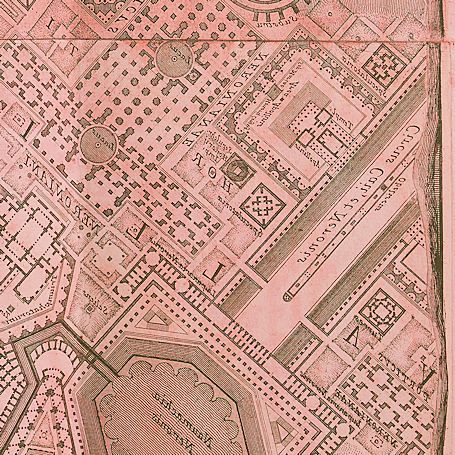 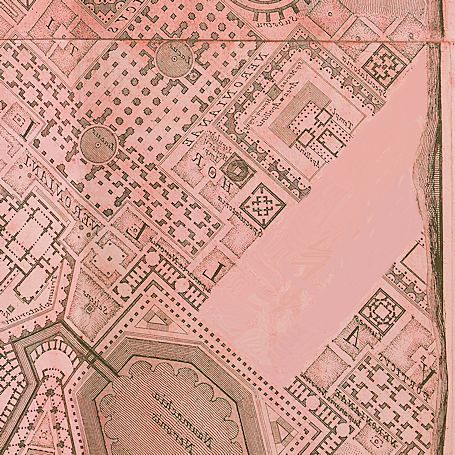
Piranesi is very pleased with Laura's erasure of the Circus of Caligula and Nero plan in the Vatican valley. It's the first circus plan erasure Laura executed fully on her own.
Artifacts of the Bianconi vs Piranesi 'Circus of Caracalla' affair 1772-1789

Tavola XV Section of the Temple lengthwise.
48 y.o. Francesco Piranesi 1806
Le AntichitÓ della Magna Grecia Parte II
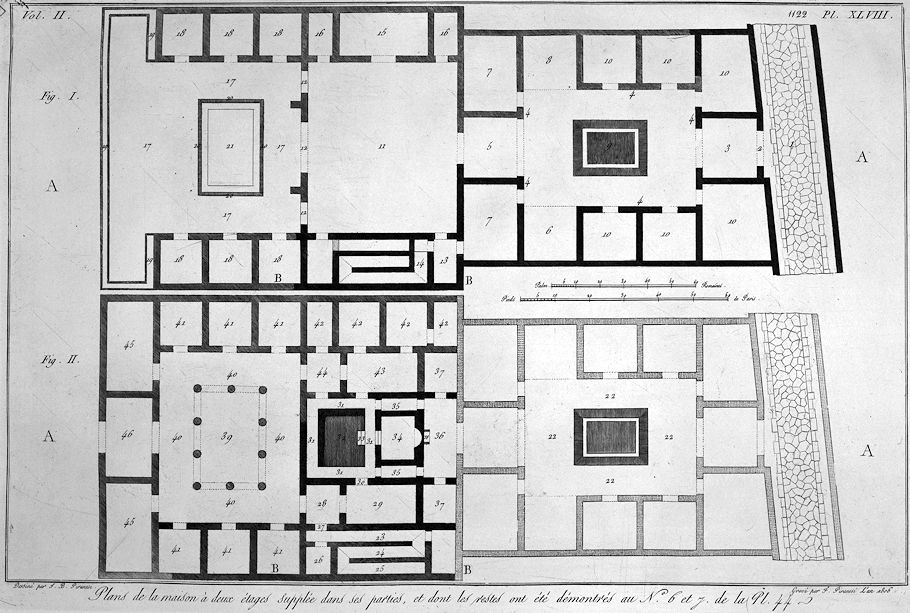
Plans of the two-storey house supplied in its parts, and the remains of which have been shown at No.6 and 7. of Pl.44.
Drawn by G.B. Piranesi
Engraved by F. Piranesi Year 1806
16 August 1812 Sunday
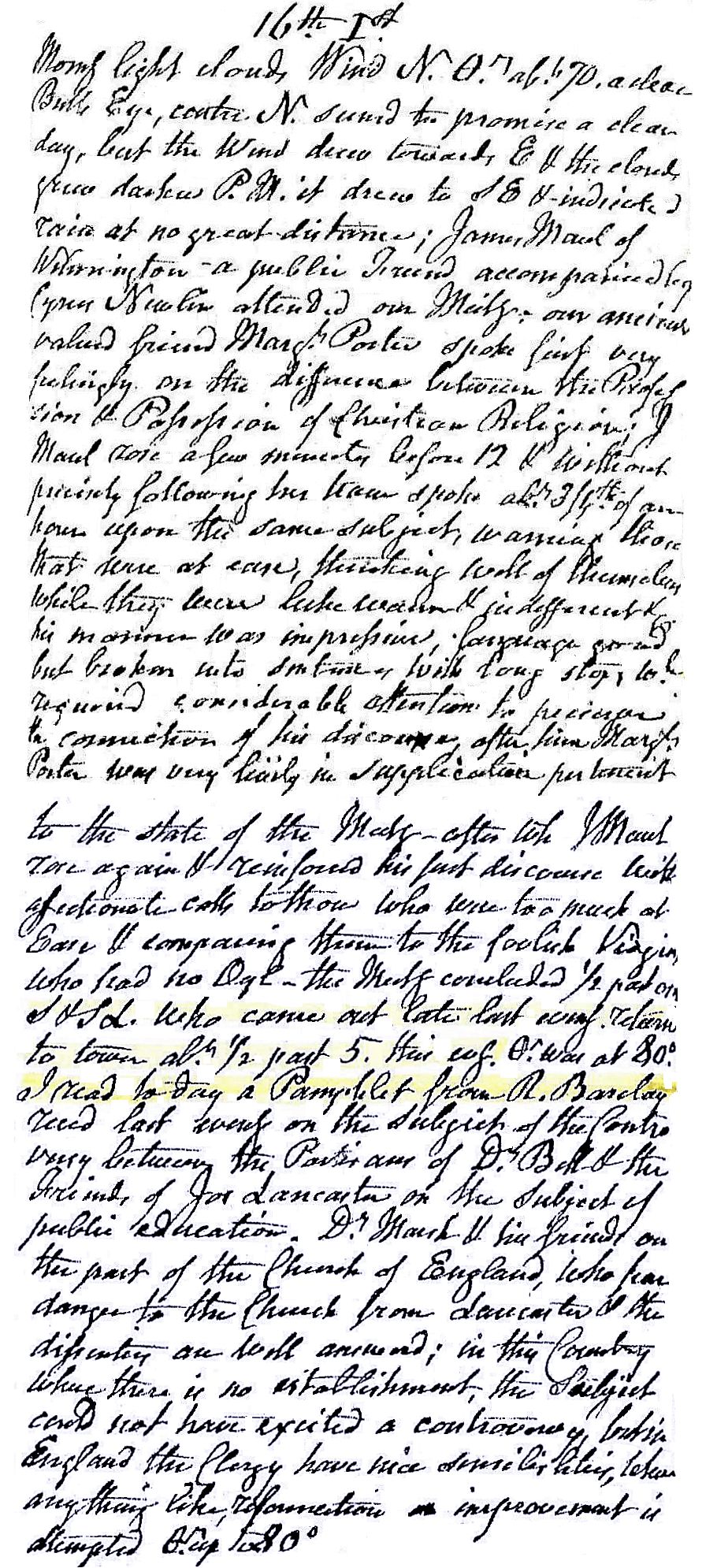
Morning light clouds, wind N, temperature about 70░. A clear Bull's Eye center N seemed to promise a clear day, but the wind drew towards E and the clouds drew darker. PM it drew to SE and indicated rain at no great distance. James Maul[?] of Wilmington--a public Friend accompanied by Cyrus Newlin attended our Meeting. Our ancient[?] valued friend Margaret Porter spoke first very feelingly on the difference between the profession and the possession of Christian religion. J Maul rose a few minutes before 12 and without precisely following her train spoke about 3/4 of an hour upon the same subject, warning those that were at ease, thinking well of themselves while they were luke warm and indifferent etc. His manner was impressive, language good but broken into sentences with long stops, which required considerable attention to preceive the connection of his discourse. After him Margaret Porter was very lively in supplications pertinent to the state of the Meeting. After which J Maul rose again and reinforced his first discourse with affectionate calls to those who were too much at ease and comparing them to the foolish virgin who had no oil. The Meeting concluded 1/2 past one. S and SL who came out late last evening returned to town about 1/2 past 5. This evening temperature was at 80░. I read today a pamphlet from R. Barclay. Read last evening on the subject of the controversy between the partisans of Dr. Bell and the friends of Joseph Lancaster on the subject of public education. Dr. Marsh and his friend on the part of the Church of England, who fear changes to the church from Lancaster and the dissentices[?] are well answered[?]. In this country where there is no establishment, the subject could not have excited a controversy, but in England the clergy have nice sensibilities, where anything like reformation or improvement is attempted. Temperature up to 80░.
16 August 1824
The farmer politely asked me to take some brandy with my water--also if I would eat some apple pie and milk, he had some dinner. I declined the acceptance as I had fully satisfied my appetite. We talked on farming etc. The rain being over I walked on until I came to Mr. Eddows place--here they gave me fruit and I made a slight sketch of their house almost covered with trees. Then took directions to Mr. Swift's farm--about three miles distant, but finding his maiden sister had here set close at hand I crossed through the bushes and came to it in a back way. I found her at home and was received politely. I admired the situation of the house and the taste of improvements, made a sketch of the house, on an eminence with sloping lawn before it round which a gravel walk bordered with many hundred flowering shrubs. Having finished my drawing, I took tea with Miss Swift and her sisters. I thought then to shape my course toward Germantown, but the ladies observed that it was growing late--they thought I had better take the morning for my walk. I accepted the offer as I wished to make another sketch which would define what was deficient in the first, and I could have the pleasure of their conversation. I made my sketch before breakfast, and then I said I would visit the brother. Introducing myself as a rambler for blackberries, he told me he would show an abundance of fine trees. I spent the day and slept here. He is a widower. Three daughters & Miss [illeg]kley ever busy in preparing for a wedding.
The next day [16 August 1824] I drew a sketch of Miers Fisher's place. Returning homeward, I made two sketches of Mr. Hartshorn's seat, then the Friend's Asylum, and reached Philadelphia as they were lighting lamps. I walked upwards twelve miles that day, and it has not surprised how little when I found myself without fatigue, and my health greatly improved.
--Charles Wilson Peale
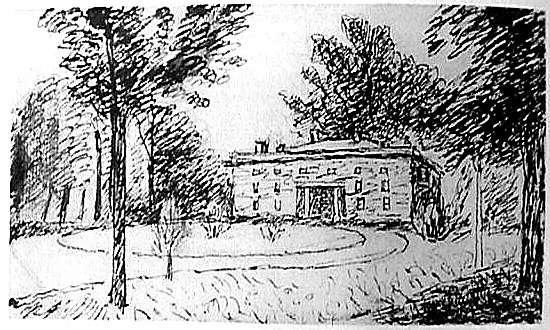
16 August 1977
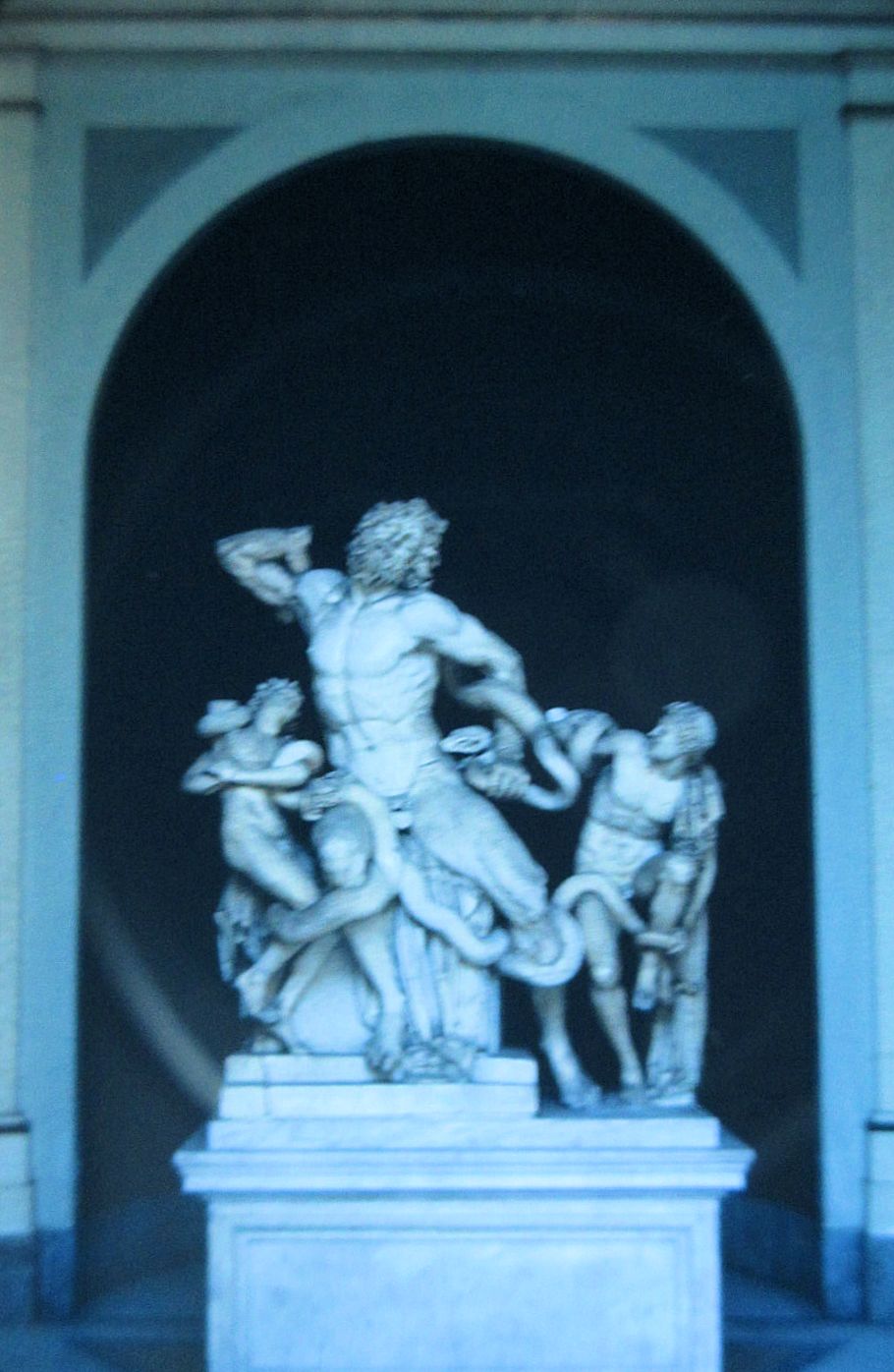
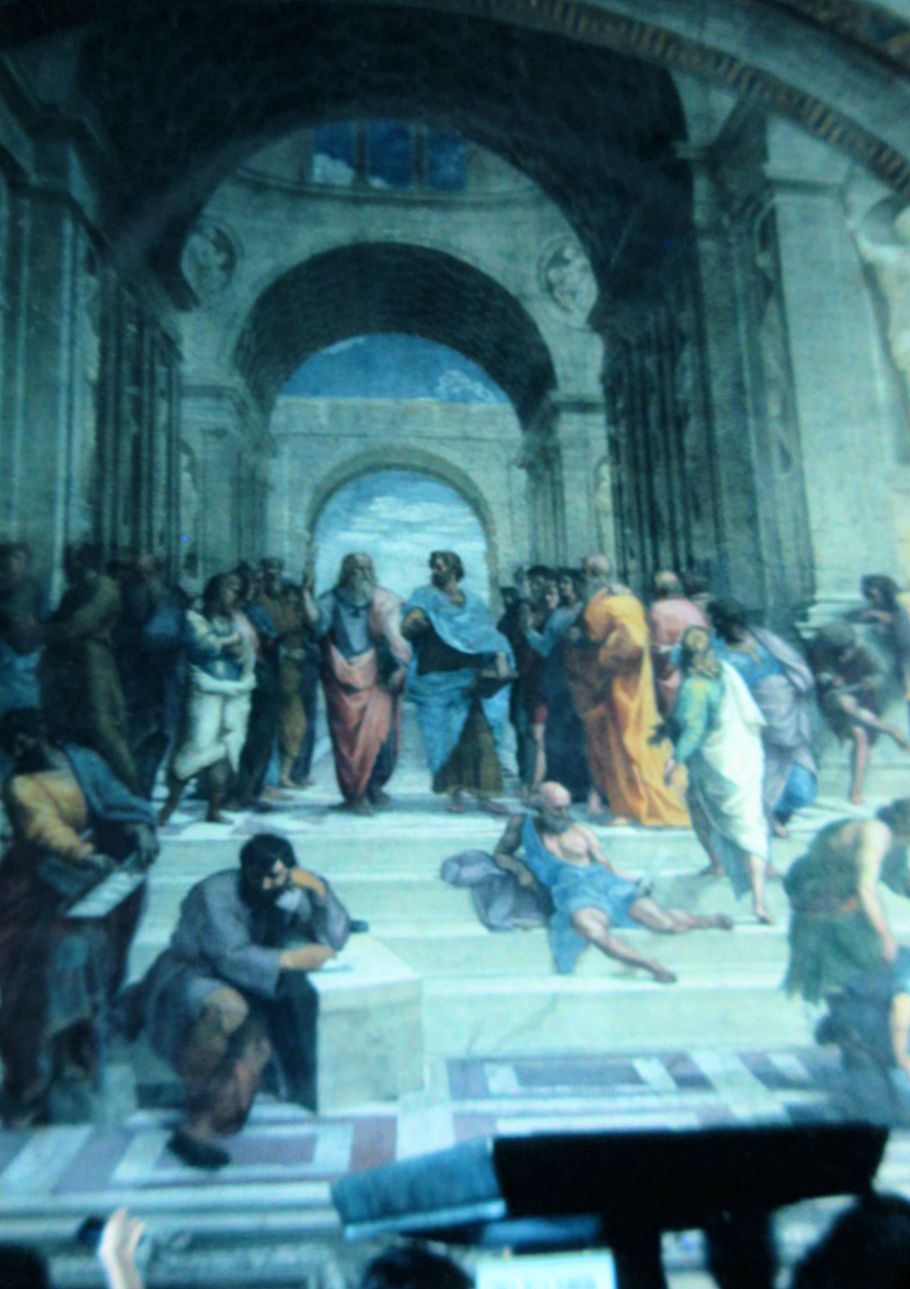
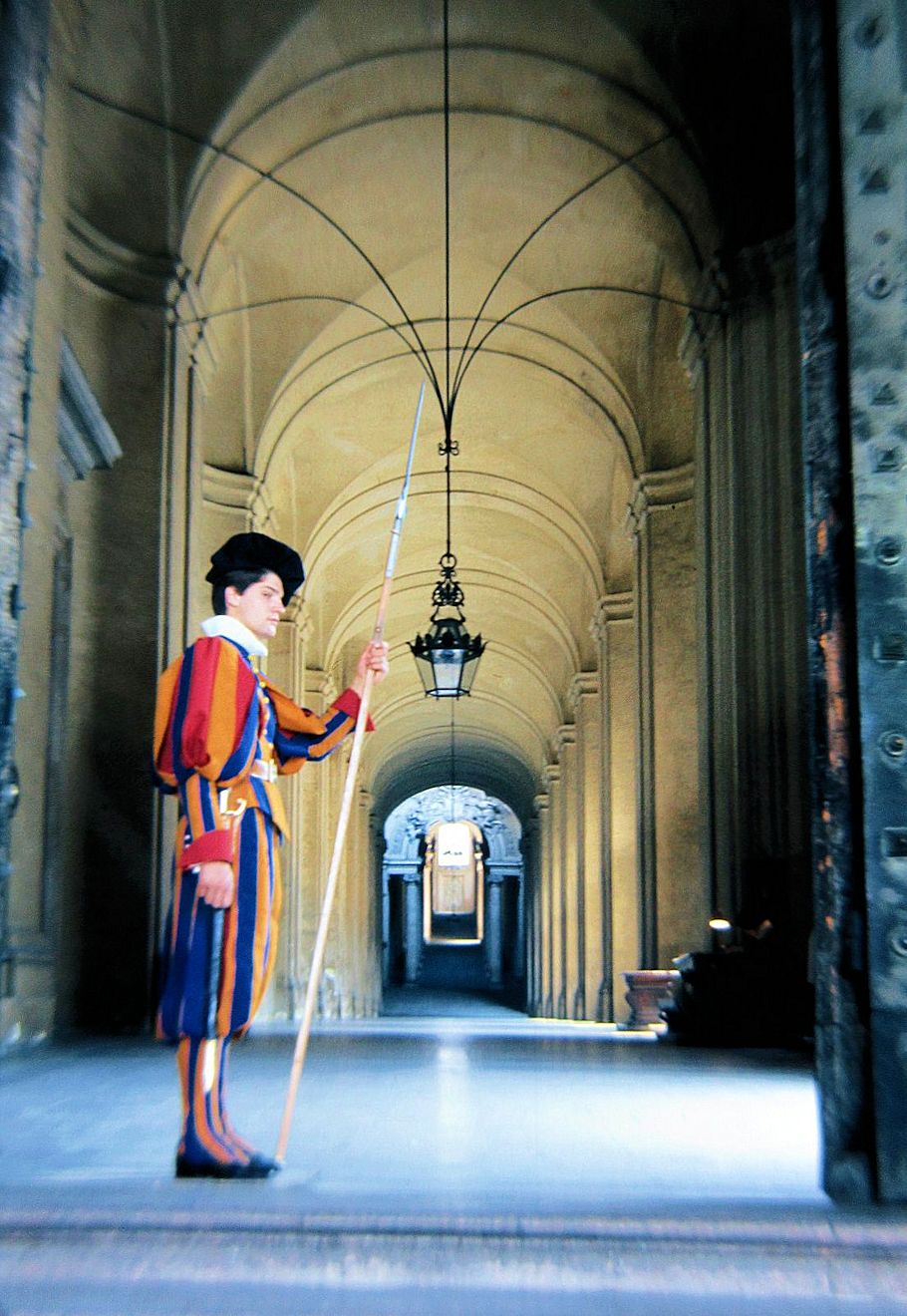
There's that open door at the end of St. Peter's Colonnade which opens up to a long corridor and ultimately the Scala Regia. As usual, a Swiss Guard was there standing at attention. I walked up the few steps anyway. The guard remained motionless until I reached the threshold, when he very subtly dipped that spear/ax thing about a quarter inch in my direction. Then I winked at him and returned back to the crowd.
16 August 2001
(Helena) EPICENTRAL
First off I have to correct a mistake I made in writing here yesterday. I wrote that I have yet to see a footnote reference regarding the damnatio memoriae of Crispus and Fausta, and that statement is plain wrong. In truth I have seen the footnote, but not recently. Hans Pohlsander provides exactly what I was asking for within the Crispus and Fausta web pages at roman-emperors.org. Pohlsander provides all the dm occurrences within the Corpus Inscriptionum Latinarum for both imperials: documented are six occurrences of dm for Crispus and one for Fausta, and the one of Fausta's is also one of Crispus'. I looked at all the referenced inscriptions (in CIL) yesterday afternoon. I'm not fluent in Latin to have been able to read everything, but I understand enough to know that there is very good documentation on this specific subject.
I also borrowed Hedrick's History and Silence, which was in the exact same stack area as the CIL. Seeing that Hedrick immediately writes about Piranesi in the book's Preface made the book doubly interesting to me. Yes it is a very good (and quite timely) book. Last night, when I got around to reading chapter four at leisure (I skipped to chapter four, but already read the preface), I found myself understanding exactly what Hedrick was relating, namely that he was very close to describing reenactment. I quickly found that the first footnote in chapter four references Collingwood and reenactment.
Now on to other wavelengths oscillating here at lt-antiq. Regarding Helena and calendrical coincidences, I no doubt appreciate what Paul Halshall writes. I, in turn, truly wish I had the academic background that makes doing saint cultus research and reading a not so almost impossible (for me) task. Nonetheless, saint cults are not finite sets or a done deal. As far as I'm concerned the Saint Helena cult (for example) is certainly hitting a new high crest.
But, of course, there are many, like Richard Burgess, who have, like Saint Thomas, doubts as strong as convictions. These cases only enforce the reality that history's real job is to understand what did happen, not so much what didn't happen. Hedrick's History and Silence is on this point axiomatic.
ps
Here's an apropos quotation from History and Silence (page 91):
"The history of political repression of social and cultural memory in ancient Rome, of the so-called damnatio memoriae, has yet to be written. Even the traditional narrative descriptions of the processes by which the state attacked the memory of those deemed public enemies are out of date or incomplete. Vittinghoff's classic book is more than fifty years old and is far from exhaustive. A full account of the damnatio memoriae would be a major project for a mature and accomplished Roman historian."
When reading all that has just been sent to lt-antiq on damnatio memoriae, I sense exactly the project that Hedrick is calling for.
16 August 2003
Re: closing the visible space
In Durand's Recueil et parallŔle des Údifices de tout genre, anciens & modernes, remarquables par leur beautÚ, par leur grandeur ou par leur singularitÚ, 1800, where a 'history' of architecture is presented via plans and elevations all drawn at the same scale and categorized by type (i.e., temples, churches, palaces, theaters, etc.), the only building/structure larger than St. Peter's Basilica is the Great Pyramid of Giza--the Great Pyramid originally reached a height of 480 ft.; St. Peter's reaches 452 ft.; the U.S Capitol reaches 287.5 ft. From this 'record', it is likely safe to say that St. Peter's is the largest hollow stone/masonry building.
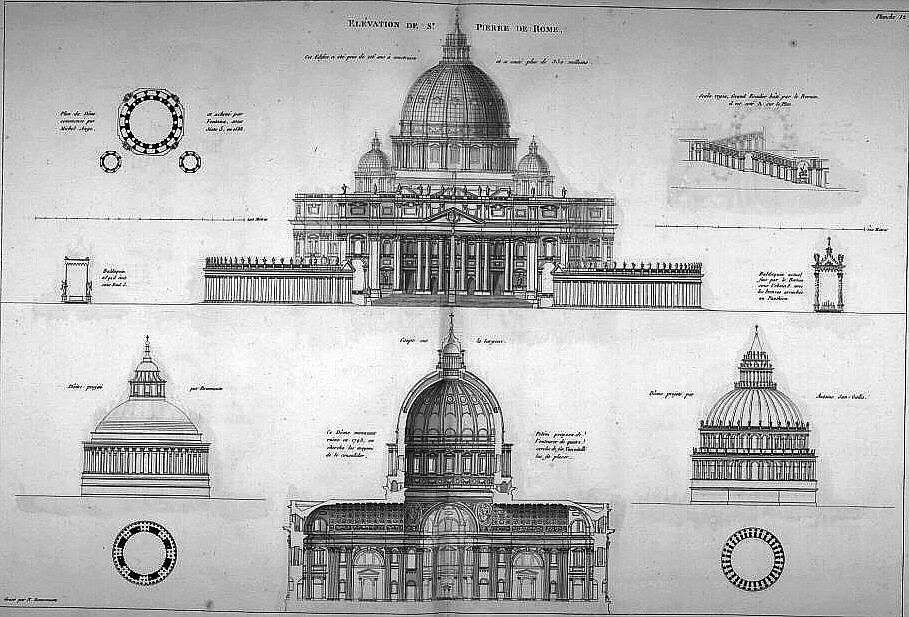
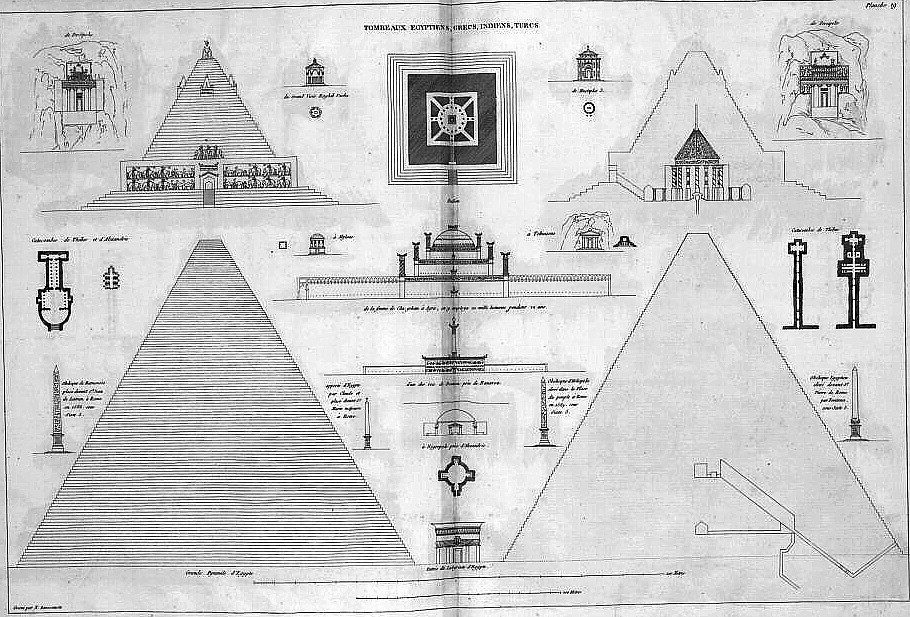
16 August 2013
I just looked out my living room window to see from where Charles Wilson Peale drew the all the way above sketch. I've been going to Lorimer Park behind Fox Chase Farm the last three early dusks to see deer. On Tuesday there was a herd of 13-15 deer, the most I'd seen around here since c. 2000. Wednesday I saw five, a doe and four very young ones, plus the added surprise of seeing a bull mount a cow and proceed with intercourse, followed by a copy-cat calf that mounted but otherwise couldn't quite reach. And last evening there was first a group of seven (three with antlers), and then a group of three in the pasture. I'm pretty sure the deer eat the blackberries I sometimes see in Lorimer Park.
16 August 2023 Wednesday
Pierre-Adrien PÔris did have his Circus of Caracalla work published, in 1782, within Jean Claude Richard de Saint-Non's Voyage Pittoresque du Royaumes de Naples et de Sicile.
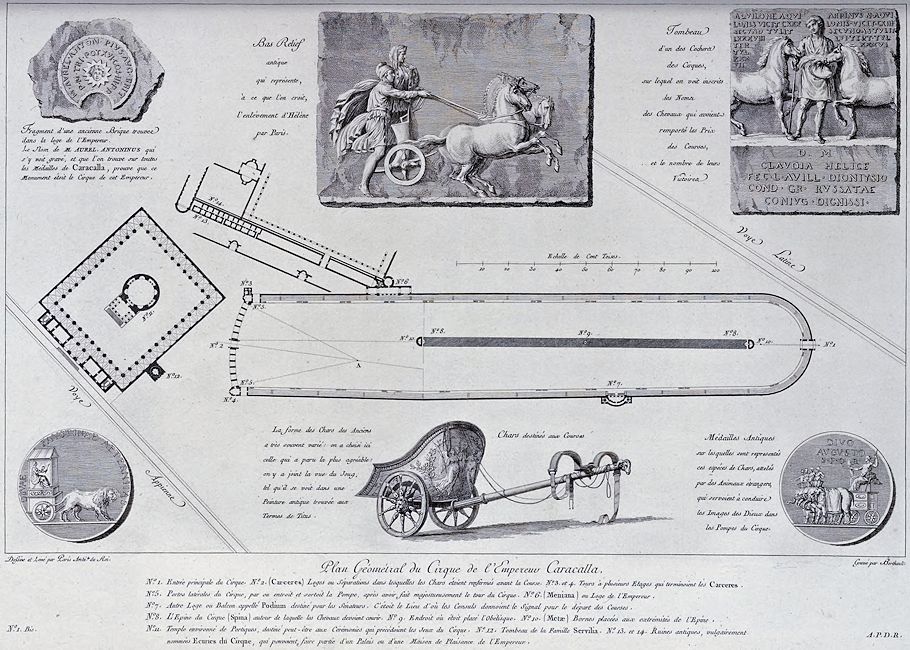
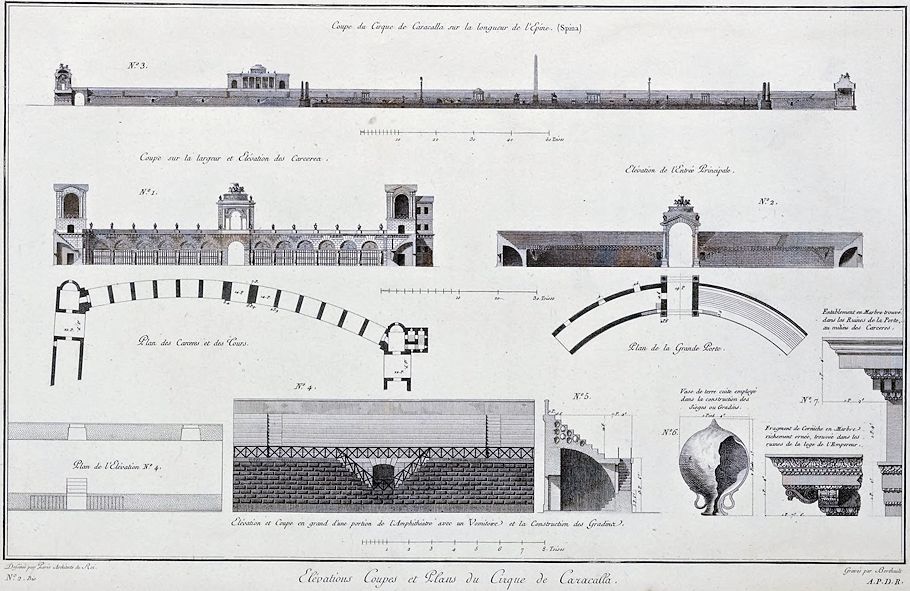
Although the above circus plan was published within three years of Piranesi's death, it nonetheless lacks the ultimate refinements of Piranesi's 1778 circus plan. Thus, the PÔris circus plan as published in 1782 may well represent the extent of PÔris's and Piranesi's knowledge of the circus plan by the end of 1774.
|